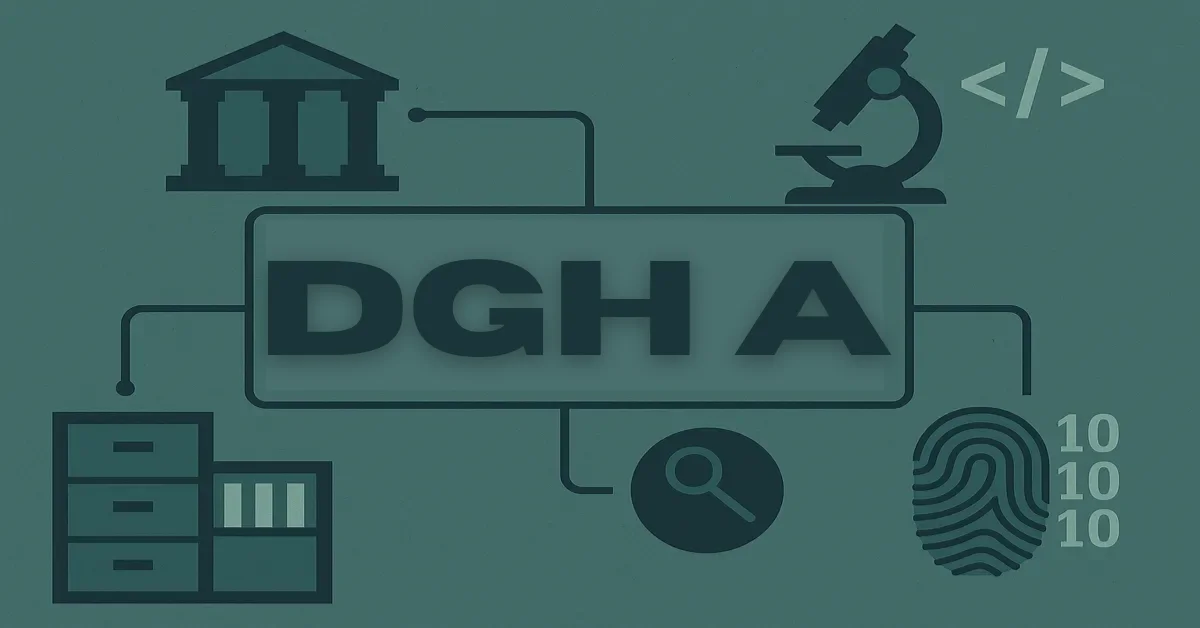In the fast-evolving world of eye care technology, DGH A has quietly emerged as one of the most trusted tools among ophthalmologists and optometrists. Compact, intelligent, and surprisingly precise, this device—often referred to as DGH Scanmate A—has redefined how professionals measure the eye’s internal dimensions. While large diagnostic machines often dominate hospital labs, DGH A proves that innovation doesn’t always come in a bulky frame. Sometimes, it’s small, handheld, and incredibly accurate.
What is DGH A?
DGH A is an A-scan ultrasound biometer, designed to measure the internal structures of the eye using ultrasonic waves. By sending high-frequency sound pulses into the eye and analyzing their reflections, the device accurately determines axial length, lens thickness, anterior chamber depth, and other vital parameters.
These measurements play a critical role in:
- Calculating intraocular lens (IOL) power for cataract surgeries
- Monitoring myopia progression in children and adults
- Evaluating ocular abnormalities related to diseases or trauma
Unlike traditional optical systems, the DGH A uses acoustic precision, making it suitable for patients with dense cataracts, corneal scars, or opacities that may block light-based devices.
How Does DGH A Work?
At its core, the DGH A employs ultrasonic time-of-flight technology. When the probe emits a pulse into the eye, the sound waves bounce off various internal interfaces—such as the cornea, lens, and retina. The device then measures the time it takes for each echo to return.
These echo times are converted into distance measurements using the known speed of sound through ocular tissues. The result? A precise map of the eye’s internal structure with accuracy as fine as ±0.03 mm.
This precision is crucial. Even a 0.1 mm error in axial length measurement can cause a 0.25 diopter error in IOL power calculation—a significant difference when striving for perfect postoperative vision.
Modes of Operation
DGH A supports two major scanning modes, ensuring flexibility for different clinical settings and patient needs:
1. Contact Mode
In this traditional approach, the ultrasound probe touches the anesthetized corneal surface directly. The device provides real-time guidance through audio and visual cues, ensuring the correct alignment and minimizing measurement errors.
2. Immersion Mode
For even higher accuracy, immersion mode uses a Prager shell—a small cup filled with sterile fluid—to separate the probe from the cornea. This eliminates the risk of corneal compression, which can otherwise shorten the measured axial length. Immersion scanning is particularly valuable in research settings and premium cataract surgery clinics.
Technical Specifications and Features
While the DGH A is small enough to fit in one hand, its specifications rival much larger machines. Here’s a breakdown of its standout capabilities:
- Axial Length Range: 15–40 mm
- Measurement Resolution: 0.01 mm
- Repeatability: ±0.03 mm
- Lens Thickness Range: 2–7.5 mm
- Power Supply: USB connection to a Windows-based computer
- Weight: Less than 1 lb (device only)
- Dimensions: Approximately 145 × 87 × 38 mm
In essence, it’s a clinic-in-a-pocket solution—lightweight, precise, and efficient.
Smart Features That Set DGH A Apart
Beyond raw measurement accuracy, what truly distinguishes DGH A is its smart integration and user-friendly design.
1. Built-In IOL Power Calculation
The device includes the most widely used intraocular lens power calculation formulas, such as:
- SRK/T
- Holladay 1
- Hoffer Q
- Haigis
- Shammas
- Holladay 2 (optional advanced version)
Even post-LASIK or PRK patients—where corneal curvature changes complicate calculations—can benefit from customized algorithms embedded in the software.
2. Compression Lockout
A standout safety feature, compression lockout automatically stops measurement if excessive pressure is applied to the cornea. This protects the eye and ensures more accurate readings, especially during contact scanning.
3. Myopia Tracking
The software allows longitudinal tracking of axial length changes over months or years, helping doctors monitor progressive myopia—a growing concern among children worldwide. Visual graphs display trends and predict future growth, enabling proactive treatment.
4. Intuitive Interface
DGH A’s software interface uses a combination of icons, auditory feedback, and automated prompts. Even new users can capture accurate scans with minimal training. This simplicity makes it ideal for mobile eye clinics and outreach programs, where time and training may be limited.
5. Data Connectivity and Storage
Through USB connection, DGH A seamlessly transfers measurements to a PC for:
- Storing patient records
- Printing reports
- Integrating with practice management systems
It provides a paperless, digital workflow, keeping patient data organized and accessible.
Applications in Modern Ophthalmology
The DGH A isn’t just a measurement device—it’s a clinical decision-making companion. Let’s explore its major uses in practice.
1. Cataract Surgery Planning
Before cataract surgery, ophthalmologists must determine the appropriate intraocular lens (IOL) power. DGH A’s accurate axial length and lens thickness data ensure that patients receive the right implant, minimizing refractive surprises.
In countries where optical biometers are expensive or unavailable, DGH A provides a reliable, cost-effective alternative.
2. Myopia Management
With global myopia rates soaring—especially among children—the ability to track axial length progression is invaluable. Small increases in axial length directly correlate with worsening myopia. DGH A offers quantitative tracking, empowering clinicians to evaluate treatment efficacy (e.g., orthokeratology, atropine therapy).
3. Ocular Research
For research institutions, DGH A supports reproducible measurements critical in studies of eye growth, surgical outcomes, and disease progression. Its repeatability ensures data consistency across large sample sizes.
4. Screening in Remote and Mobile Clinics
Because it’s lightweight and USB-powered, DGH A can easily travel with eye care teams. Its portability allows comprehensive screenings in rural areas, schools, and community health programs without heavy equipment.
5. Pediatric and Geriatric Use
Children and elderly patients often have difficulty remaining still during eye exams. DGH A’s fast measurement capability (typically under a few seconds) reduces discomfort and improves cooperation.
Comparing DGH A with Other Eye Measurement Tools
While DGH A competes with optical biometers like the IOLMaster or Lenstar, its ultrasound-based technology gives it unique advantages:
| Feature | DGH A (Ultrasound) | Optical Biometer (e.g., IOLMaster) |
|---|---|---|
| Technology | Sound waves (ultrasound) | Light (interferometry) |
| Can measure through dense cataract? | ✅ Yes | ❌ No |
| Portability | Lightweight, handheld | Stationary |
| Cost | Moderate | High |
| Training needed | Low | Moderate |
| Accuracy (normal eyes) | High | Very high |
| Versatility | Works in all eye types | Limited by opacity |
In many developing regions, DGH A is a cost-effective substitute for expensive optical systems, without compromising on clinical reliability.
Advantages of Using DGH A
- Affordability: Makes advanced eye measurement accessible to smaller clinics.
- Portability: Ideal for traveling ophthalmologists and mobile clinics.
- Reliability: Performs well even in opaque media where optical devices fail.
- Ease of Use: Simple interface reduces operator dependency.
- Safety: Compression lockout prevents corneal injury.
- Data Management: Digital integration enables paperless workflows.
- Regulatory Trust: Manufactured by DGH Technology, a reputable U.S.-based medical device maker known for decades of innovation in ophthalmic ultrasound.
Challenges and Limitations
No device is perfect—and recognizing DGH A’s limitations helps set realistic expectations:
- Requires Corneal Contact: In contact mode, corneal touch is unavoidable. Though minor, it can induce temporary discomfort.
- Operator Skill: Correct probe alignment is crucial. Misalignment can lead to inconsistent readings.
- Limited Optical Data: Unlike optical biometers, DGH A doesn’t measure corneal curvature or anterior segment imaging. It focuses solely on distance measurements.
- Software Compatibility: Works primarily with Windows systems; Mac compatibility may require emulators.
Despite these minor constraints, DGH A remains a practical workhorse for daily clinical use.
Evolution of Eye Ultrasound Technology
Ultrasound biometry isn’t new—but DGH A represents its most refined form. In the 1970s and 1980s, A-scan systems were large and analog, requiring manual caliper measurements. Today, digital computing has transformed them into real-time analytical tools with automated calculations and graphical data visualization.
DGH Technology, the manufacturer behind DGH A, has spent decades perfecting ultrasound systems for ophthalmology, including pachymeters, B-scans, and combined A/B units. Their consistent focus on quality and precision has positioned the brand as a trusted partner in eye care.
Why Ophthalmologists Prefer DGH A
When surveyed, many clinicians cite three main reasons for preferring DGH A:
- Dependability: Once calibrated, it delivers consistent results with minimal drift.
- Time Efficiency: Quick scanning reduces chair time per patient.
- Support and Updates: The company offers responsive technical assistance and regular software improvements.
The device’s combination of engineering reliability and clinical practicality has made it a mainstay in both small practices and academic centers.
DGH A in the Global Eye Care Landscape
In developing countries where high-end optical biometers remain financially out of reach, DGH A serves as an affordable bridge to precision diagnostics. Humanitarian organizations and global vision initiatives often include it in their portable eye care kits.
Its rugged design, low maintenance requirements, and ease of transport make it indispensable in resource-limited environments. Whether in urban hospitals or rural field camps, DGH A consistently delivers the same standard of measurement accuracy.
The Future of DGH A and Eye Measurement
As digital health continues to evolve, the next generation of devices inspired by DGH A may integrate AI-assisted image interpretation, cloud-based data sharing, and even wireless connectivity for real-time collaboration between specialists.
Imagine an ophthalmologist in a rural village scanning a patient’s eye, with the data instantly transmitted to a tertiary center for analysis and surgical planning. DGH A’s current design philosophy already aligns with this vision—compact, smart, and adaptable.
Conclusion
The DGH A stands as a testament to how precision engineering and clinical necessity can harmonize beautifully. It’s not just an eye measurement tool; it’s a symbol of accessibility, accuracy, and progress in global eye care. From cataract surgery planning to myopia control, it empowers professionals to make informed, confident decisions—without being bound by the limitations of larger, more expensive systems.
Whether in a modern hospital or a remote clinic, DGH A continues to prove that true innovation doesn’t always scream—it hums quietly with precision.
FAQs
1. What does DGH A stand for?
DGH A refers to the DGH Scanmate A, an A-scan ultrasound device produced by DGH Technology for eye measurement applications.
2. Is DGH A suitable for dense cataracts?
Yes. Unlike optical biometers, DGH A can measure through dense cataracts or corneal scars using ultrasound waves.
3. Does DGH A need to touch the eye?
In contact mode, yes. However, in immersion mode, a fluid-filled shell prevents direct corneal contact for greater comfort and accuracy.
4. Can DGH A calculate intraocular lens (IOL) power?
Absolutely. It includes built-in IOL calculation formulas such as SRK/T, Hoffer Q, and Holladay, among others.
5. Is DGH A portable?
Yes. Weighing under one pound and powered via USB, DGH A is ideal for mobile clinics and traveling practitioners.

